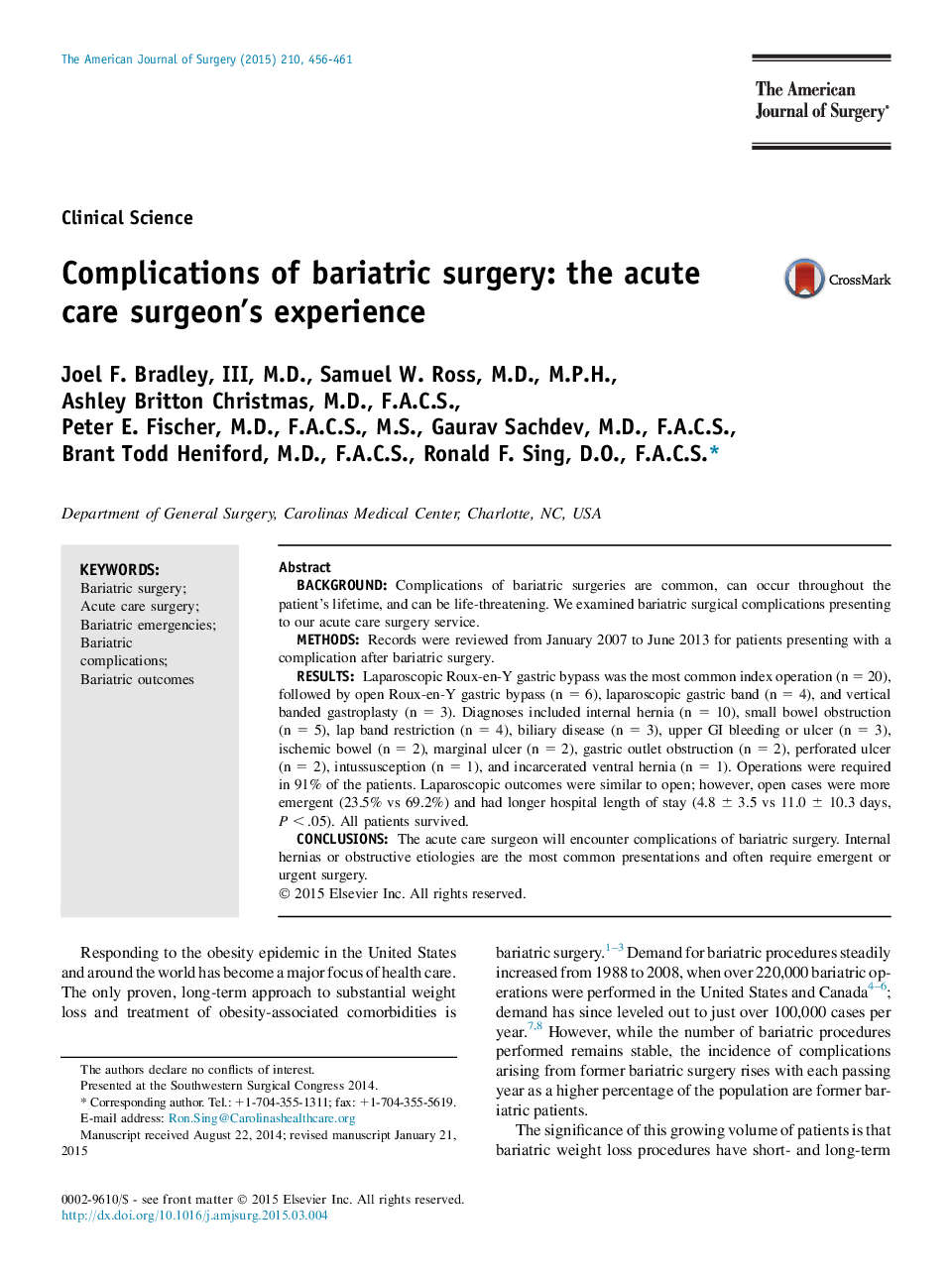| Article ID | Journal | Published Year | Pages | File Type |
|---|---|---|---|---|
| 4278530 | The American Journal of Surgery | 2015 | 6 Pages |
•Bariatric surgical complications commonly present to acute care services.•Most common presentations are internal hernias and bowel obstructions.•Most cases are manageable laparoscopically.
BackgroundComplications of bariatric surgeries are common, can occur throughout the patient’s lifetime, and can be life-threatening. We examined bariatric surgical complications presenting to our acute care surgery service.MethodsRecords were reviewed from January 2007 to June 2013 for patients presenting with a complication after bariatric surgery.ResultsLaparoscopic Roux-en-Y gastric bypass was the most common index operation (n = 20), followed by open Roux-en-Y gastric bypass (n = 6), laparoscopic gastric band (n = 4), and vertical banded gastroplasty (n = 3). Diagnoses included internal hernia (n = 10), small bowel obstruction (n = 5), lap band restriction (n = 4), biliary disease (n = 3), upper GI bleeding or ulcer (n = 3), ischemic bowel (n = 2), marginal ulcer (n = 2), gastric outlet obstruction (n = 2), perforated ulcer (n = 2), intussusception (n = 1), and incarcerated ventral hernia (n = 1). Operations were required in 91% of the patients. Laparoscopic outcomes were similar to open; however, open cases were more emergent (23.5% vs 69.2%) and had longer hospital length of stay (4.8 ± 3.5 vs 11.0 ± 10.3 days, P < .05). All patients survived.ConclusionsThe acute care surgeon will encounter complications of bariatric surgery. Internal hernias or obstructive etiologies are the most common presentations and often require emergent or urgent surgery.
